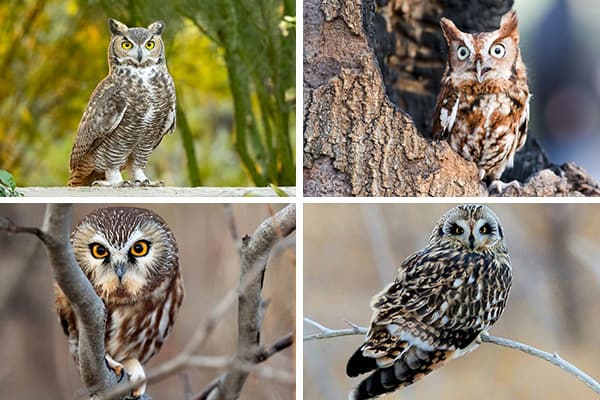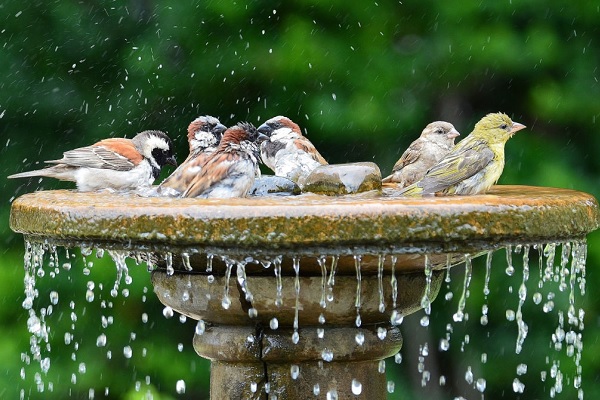Which Birds Don’t Lay Eggs: Surprising Facts You Must Know
Did you know all female birds lay eggs? Even the ostrich’s egg can be as heavy as 5 pounds. This shows how different and adaptable birds are.
Some birds, like the western meadowlark, lay 5-6 eggs in dome-shaped nests. Others, like the wood duck, can lay up to 15 eggs at once. Birds have many ways of laying eggs.
Most birds lay one egg a day until they have all they need. But some birds, like the California condor, only lay one egg every year or two. Emperor penguin dads even incubate their eggs for 65 days.
Even the swan’s egg is very strong, needing 26 pounds to break. This shows how amazing bird eggs are.
There are over 10,000 bird species, with about 4,000 migrating. This makes their egg-laying ways even more amazing. Birds are full of surprises, from the tiny Bee Hummingbird to the big peacock.
Understanding Bird Reproduction Basics
Birds are special animals that lay eggs. These eggs hatch into live chicks. This way of making babies has helped birds live in many places around the world.
The Oviparous Nature of Birds
Birds lay eggs outside their bodies. This is different from most mammals. The egg is a special place for the chick to grow.
The Role of Gender in Egg Production
Only female birds can lay eggs. They have special parts for making and laying eggs. Male birds help by fertilizing the eggs, but they don’t lay them.
Natural vs. Captive Laying Patterns
In the wild, birds lay eggs when it’s the right time. This is based on things like daylight and food. But in cages, some birds lay eggs more often. This is because of changes in their bodies and no natural cues.
Learning about how birds make babies is key to understanding them. It shows how different birds are and how they adapt. This knowledge helps us see the amazing world of birds, even those that don’t lay eggs.
| Characteristic | Description |
|---|---|
| Ovary and Oviduct | Most animals have two ovaries and oviducts, but birds have one where a layer of albumen is applied around the ovum and shell membranes are formed in the uterus. |
| Egg Composition | An egg comprises yolk, albumen, membranes, and a shell which is permeable to gases allowing oxygen through to the growing embryo. |
| Clutch Size | Different bird species produce varying numbers of clutches of eggs, with factors like food availability influencing the timing, such as Blue Tits producing one large clutch in early summer. |
| Incubation Behavior | Incubation behavior varies, with some species incubating eggs as soon as they are laid while others incubate only after the clutch is complete. |
Myths and Facts About Birds That Don’t Lay Eggs
There are many myths about bird reproduction. One big one is that some birds don’t lay eggs. But, all female birds, no matter the species, can lay eggs. Some birds seem not to lay eggs because of how they nest or because males can’t lay eggs.
Many think flightless birds like ostriches, emus, and kiwis don’t lay eggs. But, this is wrong. These birds do lay eggs, even if they do it differently than other birds. Their special ways might make it seem like they don’t lay eggs.
- All female birds, including flightless ones, can lay eggs.
- Male birds can’t lay eggs because they don’t have the right parts.
- Some birds’ unique nesting or egg-laying ways can make it seem like they don’t lay eggs.
We need to clear up these myths to really understand bird species sans eggs. By knowing the truth, we can see how amazing and varied bird reproduction is.
The Science Behind Egg Formation
Egg formation in birds is a complex process. It’s driven by hormones. An increase in estrogen starts the process, making the yolk and other parts of the egg.
The pineal gland, which senses light, is key. It tells the brain to release hormones for laying or mating.
Hormonal Influences on Egg Production
When estrogen levels go up, the bird gets ready to make an egg. This hormone change makes the ovarian follicles grow. They will hold the yolk.
Yolk formation takes about 9 days. Most of it happens in the last 7-9 days before laying.
Physical Requirements for Egg Development
For egg development, the bird’s body needs certain things. Calcium is key for the egg shell. Good food is important for the growing embryo inside.
The time it takes to make an egg varies. Some birds do it in 24 hours. Others take several days.
| Bird Species | Egg Formation Time |
|---|---|
| Songbirds, woodpeckers, ducks | 1 egg per day |
| Swans, herons, cranes, owls | 2-day interval |
| Eagles, penguins, cassowaries | 3-5 day interval |
| Mound-building birds (megapodes) | 4-8 day interval |
| Kiwis | 1 egg weighing about a fourth of the female’s body weight |
| Elephant birds of Madagascar | Eggs weighing up to 1,000 pounds, measuring 13.5 x 9.5 inches, and having a volume of about 2 gallons |
Learning about avian reproduction and egg laying birds is fascinating. It shows how different birds adapt to survive and multiply.
What Birds Don’t Lay Eggs: Common Misconceptions
Many people think some birds don’t lay eggs. But, this is not true. Birds like ostriches, emus, and kiwis do lay eggs. They might nest differently and have special eggs, but they still lay eggs.
Some think only female birds lay eggs. This leads to the belief that some birds don’t lay eggs. But, it’s just that males don’t lay eggs. All female birds can lay eggs, no matter the species.
- Certain bird species, such as turkeys and domestic chickens, can reproduce through parthenogenesis, a form of asexual reproduction.
- Monotremes like the platypus and echidna, although not classified as birds, lay eggs and exhibit mammalian characteristics.
- Some bird species, like ostriches and kiwis, produce larger, fewer eggs, while others like finches may lay several smaller eggs.
It’s important to know how different birds reproduce. This helps clear up myths about birds not laying eggs. By learning about their unique ways, we can better understand and appreciate birds.
| Species | Egg Characteristics | Nesting Behaviors |
|---|---|---|
| Ostrich | Large, thick-shelled eggs | Communal nesting, with multiple females contributing to a single nest |
| Emu | Greenish-blue, thick-shelled eggs | Male incubates the eggs and cares for the chicks |
| Kiwi | Large, white, smooth-shelled eggs | Burrows or tree cavities used for nesting, with both parents sharing incubation duties |
Egg Laying Frequency Across Bird Species
Egg-laying varies a lot among birds. Wild birds lay eggs seasonally, with one or more clutches a year. But, domestic birds like chickens can lay eggs every day if they get enough light and food.
Wild Bird Laying Patterns
In the wild, many things affect how birds lay eggs. These include the bird’s type, where it lives, the weather, and food. Some birds, like wood ducks, lay eggs in other birds’ nests. This is called conspecific brood parasitism and happens in almost a third of 256 bird species in the Anatidae family.
Domestic Bird Egg Production
Domestic birds, like chickens, can lay eggs every day. Things like how long the day is and the temperature can make birds lay eggs. But, laying too many eggs can make birds sick. They might need a vet to help them stay healthy.
The way birds lay eggs is very interesting. By learning about it, we can understand birds better. It shows how special and important birds are to us.
Unique Nesting Behaviors and Egg Protection
The bird world is full of different ways to nest and keep eggs safe. Some bird species sans eggs build nests like we do. Others have special ways to guard their egg laying birds.
The maleo bird on Sulawesi island lays an egg on the beach. It uses the sun’s warmth to keep it warm. In southern Arizona, Texas, and northern Mexico, Ferruginous pygmy owls lay eggs in giant cacti holes.
Sociable weavers in Africa’s Kalahari Desert build huge nests. These nests can weigh tons and hold up to 100 birds. The common cuckoo, however, lays its eggs in other birds’ nests. This helps it survive.
Nesting ways change a lot, depending on where birds live and who might eat them. Tailorbirds in tropical Asia make nests with up to 200 stitches. Pied flycatchers in Britain use leaves and moss. Blue tits use feathers and wool in their nests.
Egg colors and patterns help them blend in. The nest’s shape and what it’s made of keep eggs warm and safe. They also protect against bad weather and predators.
The Evolution of Bird Egg Characteristics
Bird eggs are very different in shape, size, and color. They can be round or long with pointed ends. Each shape helps birds nest and care for their young in special ways. Scientists think egg shape might also help birds fly better.
Egg Shape Variations
Eggs have many shapes, from round to cone-shaped. Shorebirds have more egg shape types than passerines, even though passerines have more species. Before birds existed, some dinosaurs laid eggs that looked similar.
Color and Pattern Diversity
Eggs come in many colors and patterns, thanks to just two pigments. These colors help eggs blend in and stay safe in different places. For example, white eggs are common in nests in holes, while colored eggs are found in nests on the ground.
Precocial birds, like wood ducks, can move and find food soon after hatching. Altricial birds, which nest in holes, are very young and need their parents to feed them.
The study looked at 49,175 bird eggs from about 1,400 species. They used a computer program called Eggxtractor to study the eggs. This helped them understand how bird eggs evolved.
Remarkable Facts About Bird Egg Development
The world of egg laying birds is full of amazing facts. From the start, a bird’s egg changes in a complex and interesting way. This happens in the oviduct.
Did you know bird embryos can make sounds from inside the egg? They can talk to their parents and siblings before they come out. The eggshell is also special. It lets in air and oxygen for the growing baby bird.
The biggest bird egg is from an ostrich, weighing up to 5 pounds. On the other hand, hummingbirds lay the smallest eggs, only 1/2 inch long. Some birds, like wood ducks, can lay dozens of eggs at once. This is really amazing.
The eggshell is not just for protection. It also gives the baby bird calcium. This is important for growing strong bones and feathers.
| Egg Incubation Periods | Nest Success Rates | Survival Rates |
|---|---|---|
|
|
|
The development of bird eggs is full of surprises. From the sounds of embryos to the different sizes of eggs, it’s all very interesting. It keeps scientists and bird lovers curious.
Also, Visit Finding a Dead Bird in Pool
Environmental Factors Affecting Egg Production
The world of birds laying eggs is very interesting. Many things in the environment affect this. For egg laying birds, the seasons play a big role. They help start the process of making eggs.
Light is very important too. When it gets lighter, birds start laying eggs more. This is because their bodies get ready for it.
The climate also matters a lot. In colder places, eggs are darker. This helps keep the eggs warm. The climate can change how big eggs are and how often birds lay them.
Seasonal Influences
When the days get longer, birds change their egg-laying plans. This is because of hormones and light. Birds adjust to the seasons to help their babies grow well.
Climate Impact on Laying Patterns
The weather where birds live affects how they lay eggs. In cold places, eggs are darker. This helps keep them warm. But, bad weather and climate change can mess up their plans.
It’s important to know how the environment affects birds. This helps us take care of them. We can make sure birds keep laying eggs for a long time.

The Role of Male Birds in Reproduction
Male avian reproduction doesn’t include laying eggs. Yet, they are key in the life cycle of egg laying birds. They help with nest building, egg incubation, and raising chicks.
In some cases, like the Emperor penguin, males incubate eggs. This is crucial for the egg’s growth. They also help with fertilization, adding their genes to the baby.
Many males show off in courtship to find a mate. They display their looks and skills. This is vital for finding a good partner and starting a family.
The way males help in reproduction changes a lot between species. Some birds are monogamous, staying together and helping with parenting. Others are more free-spirited, with males playing a smaller part in raising chicks.
| Statistic | Percentage |
|---|---|
| Male birds that lack a penis | 97% |
| Bird species with a phallus for sperm deposition | 3% |
| Average length of the Argentine lake duck’s phallus | 20 cm |
| Successful passing of semen between birds | 1-2% |
Knowing how male birds help in reproduction is important. It helps us understand avian reproduction and how to protect egg laying birds.
Must Read: How to Make Birds Outside Shut Up
Modern Research on Avian Reproduction
Recent studies have shed new light on bird egg formation and development. They have found amazing things that challenge old beliefs. This gives us a deeper look into how birds reproduce.
A study on the endangered California condor found something interesting. These birds only lay one egg every one to two years. This is very different from many other birds.
Research on eggshell porosity has also shown surprising things. Scientists found that chicken eggs can have up to 17,000 pores. These pores help with gas exchange during incubation. It shows how birds have adapted to ensure their eggs develop well.
Studies are also looking at how environmental changes affect bird reproduction. New methods, like data loggers, help us learn more about bird physiology and nesting. These tools are helping us understand how embryos develop inside eggs.
| Statistic | Insight |
|---|---|
| Annual egg productivity can be up to 200% of female body mass in some bird species. | Highlights the remarkable reproductive capabilities of certain bird species. |
| Species with greater annual egg productivity tend to have higher mortality rates among females compared to males. | Suggests a trade-off between high reproductive output and female survival in some bird populations. |
| Mating systems play a secondary role, with polygynous bird species showing more equal mortality rates between sexes. | Indicates that factors beyond mating systems, such as parental care and nest strategies, can influence sex-specific mortality in birds. |
As we learn more about avian reproduction, we’ll understand birds’ amazing ways to survive. These studies help us see how egg laying birds adapt to ensure their species thrives.
Conclusion
All female birds lay eggs, without exception. The variety in egg-laying shows how adaptable birds are. Knowing about bird reproduction helps us protect them and understand their lives.
From the tall ostrich to the small kiwi, birds have different ways of laying eggs. The ostrich’s speed, the emu’s big eggs, and the cassowary’s careful nesting show their strength. Learning about these helps us see the beauty of nature.
Exploring bird eggs and how they reproduce is fascinating. You’ll learn about gender roles, seasons, and how the environment affects them. This knowledge helps us appreciate the amazing world of birds.







